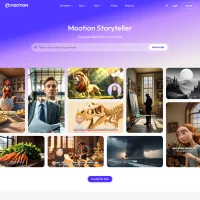Stay Ahead of the Curve
Latest AI news, expert analysis, bold opinions, and key trends — delivered to your inbox.
Understanding Meta's Quest for Larger AI Models: Implications for Advertising and User Experience
4 min read Exciting news from Meta! They're working on behavior analysis systems that surpass the size of ChatGPT and GPT-4 by "orders of magnitude." ? What impact will this have on content recommendations? Let's explore the possibilities June 30, 2023 07:48
Exciting announcement from Meta: They are developing behavior analysis systems that are "orders of magnitude" larger than existing large language models like ChatGPT and GPT-4. What does this mean for content recommendation algorithms? Let's dive in.
Meta, in an effort to enhance transparency, recently provided insights into their AI models and computation resources. They excel in multimodal AI, combining data from multiple modalities to better understand content. But their plans go even further.
The revelation is that Meta aims to build recommendation models with tens of trillions of parameters, surpassing the largest language models today. While these models are theoretical at this point, Meta is committed to efficiently training and deploying them at scale.
The scale and complexity of these models raise questions about their necessity. However, considering the vast amount of content and metadata on Meta's platforms, a large model may be required to analyze billions of pieces of data and make accurate recommendations.
While the exact parameter count of GPT-4 is uncertain, ChatGPT stands at around 175 billion parameters. Meta's ambitious goal of surpassing existing models suggests a potentially massive AI model that predicts users' preferences based on their actions.
It's worth noting that Meta is not alone in this pursuit. Other platforms like TikTok have pioneered algorithmic tracking and recommendation systems to keep users engaged. Advertisers, too, are intrigued by Meta's technical advancements in understanding user interests.
However, as AI-driven targeting becomes increasingly granular and precise, questions arise about the legitimacy and value of such practices. Users are demanding more control and transparency over their data and preferences. The balance between personalization and privacy is crucial.
Meta's endeavor to create larger models highlights the ever-evolving landscape of advertising and AI. The web's reliance on precision ad targeting is being reinforced by new technologies, but their true superiority and impact remain uncertain.
As users, let's continue to raise important questions about the implications of these behemoth AI models. How much personalization is desirable? How can we strike a balance between user experience and privacy? Let's engage in this ongoing conversation.
In the end, the decision lies with us as users and consumers. By understanding the intricacies of AI-driven systems and advocating for responsible practices, we can shape the future of technology and ensure it aligns with our values and needs. Stay informed and empowered!



















 AI Agents
AI Agents